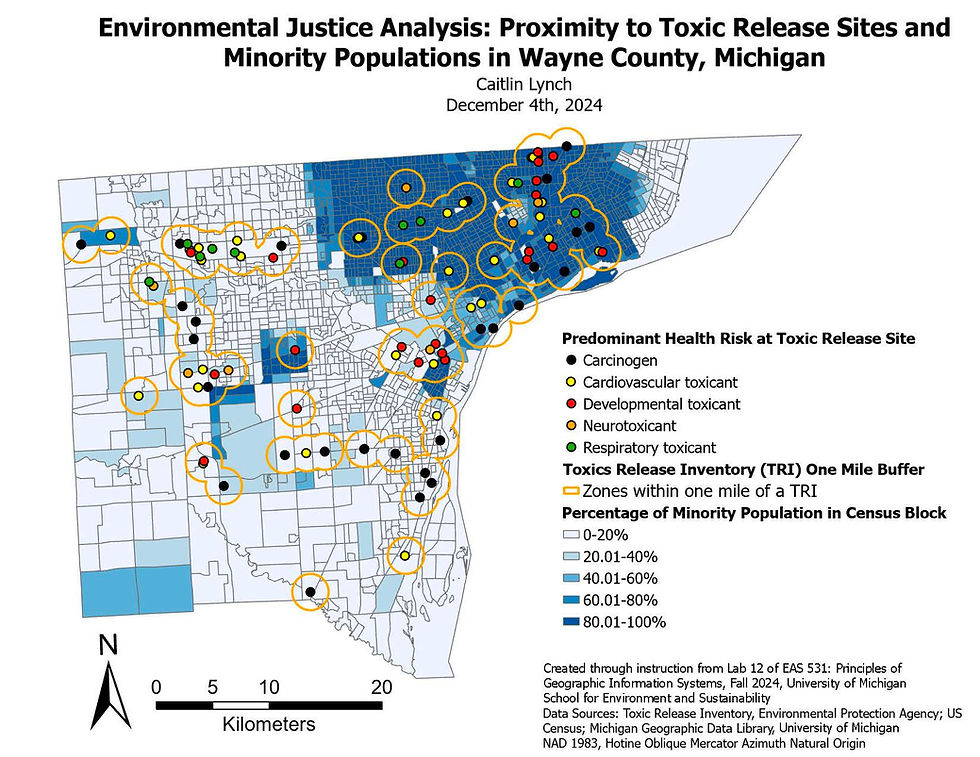Expert Spotlight: Kim Rollings on Health and Design
- rmehdipa
- Dec 16, 2022
- 3 min read

As part of our ongoing blog series highlighting the work of our experts and partners, we asked Kimberly Rollings, Ph.D., about her focus on health and design. Stay tuned for more spotlight blogs!
Trained in environmental psychology and architecture, Kim Rollings is a Health and Design Research Fellow at the University of Michigan’s Institute for Healthcare Policy and Innovation. She was formerly an Assistant Professor at the University of Notre Dame School of Architecture and Department of Psychology. Dr. Rollings’ research examines effects of the built and natural environment on physical and mental health, particularly among vulnerable populations within housing, school, and neighborhood settings. Her work has been featured in peer-reviewed publications and invited presentations, as well as by the Urban Institute and National Collaboration for Childhood Obesity Research. Dr. Rollings received her M.S. and Ph.D. in Human Behavior and Design from Cornell University’s Department of Design and Environmental Analysis. She also holds a B. Architecture from the University of Notre Dame.
HSHE: Can you tell us about your research and the Health and Design Fellowship?
Kim Rollings: My research examines the effects of built and natural environments on physical and mental health, particularly among vulnerable populations (e.g., children, low-income, formerly unsheltered, aging) in residential settings. I develop and test environmental assessment tools, analyze design attributes and occupant health outcomes, and often work with community partners and architecture firms to make sure the results are useful to and reach practitioners.
The Health and Design Fellowship is a unique opportunity for an architect to work with health services researchers and examine questions related to the built environment, health, healthcare, and policy in innovative and interdisciplinary ways. Dr. Andrew Ibrahim, fellowship director, is a practicing surgeon and faculty researcher with former training in architecture. He is also the Chief Medical Officer of a large design firm called HOK. Our collaboration explores how large insurance claims datasets can be used to study effects of housing and community design on healthcare outcomes to improve occupant health, influence design, and inform policy, especially within the context of social drivers of health and affordable housing design.
HSHE: Could you briefly describe the findings in your recent paper published in JAMA (Journal of the American Medical Association) Network Open titled “Association of Coded Housing Instability and Hospitalization in the US” and their implications for both the medical and housing fields?
KR: The paper examined five medical billing codes that document whether hospitalized patients experience aspects of housing instability. My coauthors and I analyzed more than 87 million hospitalizations to identify common reasons for hospital admission, and whether housing status, according to these codes, was associated with those reasons. The most common reasons for hospitalization among patients with one of the housing codes were mental, behavioral, and neurodevelopmental disorders. Patients with these housing codes also had longer hospital stays and a total annual inpatient cost of $9.3 billion. Our findings suggest that stakeholders, including in health care and housing fields, working to address housing instability, mental and behavioral health, and use of inpatient hospital services would likely benefit from collaboration.
HSHE: With training in environmental psychology and architecture, can you describe how you have merged the fields of environmental psychology, architecture, housing, and health and what opportunities that has presented you in your research and practice?
KR: Architecture introduced me to the art and practice of designing and building spaces, buildings, and cities. However, unlike other disciplines and professions (e.g., science and medicine), architecture lacks a history of rigorous scientific research, evaluation, and dissemination. I was unprepared to answer questions I had about how spaces and buildings affected occupant health and well-being, or how to create healthier buildings.
By studying environmental psychology (also known as environmental design research and people-environment studies) – the study of interactions between people and their surroundings, including the built and natural environment – I was able to focus on understanding how design attributes affect our health and other outcomes, especially among vulnerable populations who stand to benefit most from intervention. The knowledge and skill-set that I continue to develop have allowed me to participate in impactful interdisciplinary research and real-world projects with academics, design and health practitioners, and community partners. Although often challenging, we all benefit from the interdisciplinary collaboration aiming to build healthy spaces and places by design.
Would you like us to share contact information (email, twitter, website, etc.)?
Twitter @KimRollingsPhD



Comments